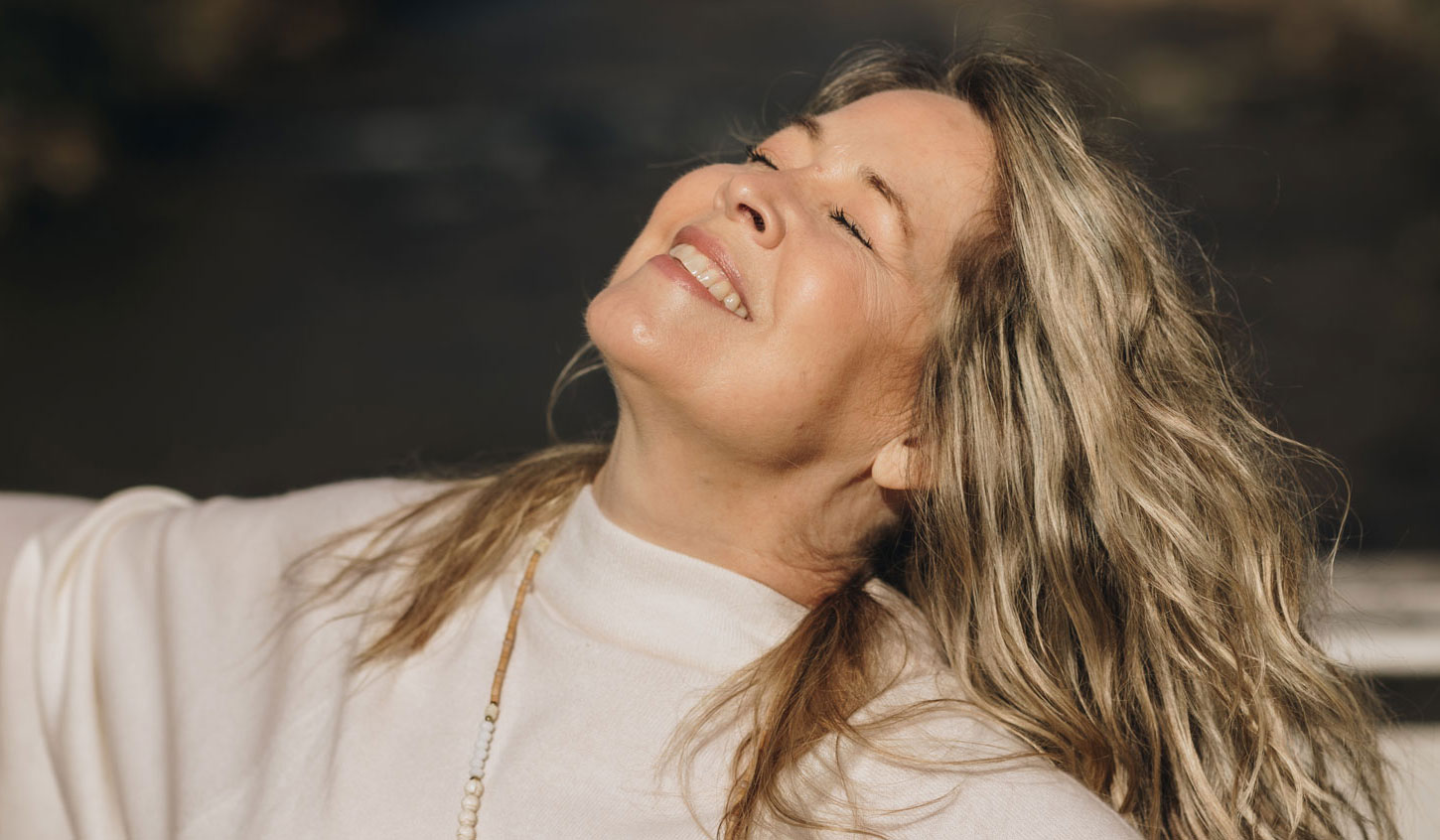Eight Self-Care Tips for Slowing Down and Savoring Life

We’re infected by the “disease of speed,” and it’s an epidemic. We’re all moving so fast that we don’t even notice the toll it takes on our health, relationships, diet, work, environment, and community. We wonder why, when we finally take a vacation, we get sick.
Physically, the costs of ignoring stress are staggering, manifesting in cardiovascular conditions and other diseases. Psychological stress causes anxiety, depression, eating disorders, and other mental health challenges. And some psychologists say that going fast is a way of avoiding what we don’t want to deal with … but that’s a whole other conversation.
The question is, Is it possible to slow down?
From my perspective, the answer is yes. I owned a business in a city for 15 years, and just a couple of months after I moved from the suburbs to a rural area in western Massachusetts, I felt a major shift. My environment has had a huge impact on this change, but my behaviors have also changed.
But you don’t have to move (or move mountains) to find opportunities to slow down. Here are some ideas.
1. Pay attention.
In simple terms, the solution is to pay attention, on purpose, in a systematic way, in the present moment. In other words, be mindful. Mindful living is a way of life that encourages people to find calm by connecting with the present moment, just as it is.
Jon Kabat-Zinn says, “Mindfulness is a certain way of paying attention that is healing, that is restorative, that is reminding you of who you actually are so that you don’t wind up getting entrained into being a human doing rather than a human being.”
As much as possible, pay attention to what is happening in each moment. Notice your body, breath, thoughts, energy, environment, those around you. Look for details. Try to notice something new and different. Be curious.
2. Eat slowly.
In his book The Slow Down Diet: Eating for Pleasure, Energy, and Weight Loss, Marc David explains that when we move through life fast, we inevitably eat fast, too, which affects the efficiency of our metabolism and creates digestive problems. He says, “the same part of our brain that turns on stress turns off digestion. And conversely, the part of the brain that turns on the relaxation response turns on full, healthy digestive power.” Slowing down and relaxing the mind and body supports digestion and metabolism.
3. Connect with nature.
Go outside. Take a walk. Breathing in fresh air can lift your mood and energy and can also ease symptoms of depression, stress, diabetes, and addiction. Being outdoors always centers me, fills me with gratitude, provides a sense of well-being, and shows me what an amazing world we live in. The beauty of nature keeps me humble and reminds me that there is something so much bigger than me at work in this universe. When I’m in nature, I instantly want to slow down.
4. Mono-task.
Busier is not better. Research shows that multitasking—which really is “shift tasking,” because our brains can’t actually do two things that require discernment at the same time—reduces productivity by 40 percent. It’s true when they say less is more.
One of my favorite Albert Einstein quotes is, “Any man who can drive safely while kissing a pretty girl is simply not giving the kiss the attention it deserves.” When we multitask, we are not actually fully present to any of the things we are doing. Realistically, it's about striking a balance between doing what is needed each day and also giving each task and person the presence they deserve.
5. Take a technology break.
Recently I was astounded to learn that, according to the research group Dscout, we touch our phones around 2,617 times a day, or 2.5 hours per day—four hours for heavier users. Let’s look at the math: If you are going to use your phone for another 35 years of your life, at the rate of 2.5 hours a day, you will spend about nine months of your life looking at your phone. Wouldn’t you rather use that time doing other things? Try turning your phone off more often, so you can experience life instead of reading about it on social media.
6. Savor moments.
In his 2004 book In Praise of Slowness, Carl Honoré describes the Slow Movement as “a cultural revolution against the notion that faster is always better. The Slow philosophy is not about doing everything at a snail's pace. It's about seeking to do everything at the right speed. Savoring the hours and minutes rather than just counting them. Doing everything as well as possible, instead of as fast as possible. It’s about quality over quantity in everything from work to food to parenting."
One day I was working on my computer, and my young son was pestering me about something. “Mom, Mom, Mommmm …” I just kept typing, throwing over my shoulder, “Hold on, buddy, I’m in the middle of something.” This went on for a few minutes until I got annoyed and asked him what was so important. His reply: “I just wanted to tell you that I really love you, Mommy.” I stopped typing. Right then, I realized that I was missing these precious moments—the things that really matter.
7. Create sacredness.
A ritual consists of symbolic behaviors performed in a ceremonial or intentional way. Rituals can take an extraordinary array of shapes and forms—complex or simple, performed in a group or in solitude, for a special event or on a recurring basis.
Rituals breathe intentionality into life. They are important because we infuse them with meaning. Laura Day, intuitive and author, explains in her book The Circle how rituals differ from habits. Habits, she writes, are “the soulless reflexes that allow us so easily to sleepwalk through our lives.” Rituals are sacred, not mundane. A yoga practice can be a powerful ritual that refocuses the body and mind toward a more profound place. Author Elizabeth Gilbert says that meaning is what helps us make sense of chaos, and we should give ourselves permission to do what we need to do to find meaning in this life.
Research shows that even simple rituals can be extremely effective for reducing anxiety, boosting confidence, and reminding us of the deep meaning of being alive. And the best part is, we can make up our own rituals. Yours could be your daily yoga practice or a morning self-care routine. It could be family dinner on Friday nights, a weekly phone call with a friend, a goodnight song you sing to your child, or an annual vision board group on January 1st. Whatever you choose, remember that the goal is not to create more stuff to do, but to make the things you do more meaningful.
Buddhism encourages us to find sacredness in the acts of daily living, such as washing the dishes or waiting in line. One of my favorite sayings from the Buddhist traditions is, “Wash the dishes like you were giving the baby Buddha a bath.” Can you find that level of presence and sacredness in everything you do?
8. Effortlessly de-stress.
“When we invite a slowing down and create an environment of stillness within and around ourselves, we begin the process of de-stressing,” says Michelle Dalbec, Lead Faculty at Kripalu. It’s extremely hard, if not impossible, to relax when you are constantly moving. What we do with our body and our mind affects our physiology.
Our autonomic nervous system encompasses the sympathetic and parasympathetic systems. The sympathetic, known as the stress response, keeps us awake, alert, and moving so we can respond quickly to threat and danger. The parasympathetic, or relaxation response, slows us down, producing relaxation in the body and calm in the mind.
The two systems work together. Think of them as sitting on opposite sides of a seesaw; as one becomes more active, the other becomes less active. They are meant to share the responsibility of regulating you throughout the day. But when we live at a fast pace, always in a state of movement and high alert, we can get stuck in the stress response, producing adverse physical and mental effects. By stimulating our relaxation response, we restore balance and naturally slow down our pace.
In his book Buddha’s Brain, neuropsychologist Rick Hanson suggests the following techniques for stimulating the relaxation response:
- Deep belly breaths: Put your hand on your belly and feel it rise and fall as you breathe in and out.
- Peaceful imagery: Take a few moments to imagine yourself in a peaceful place—beside a mountain stream, in a forest, on a secluded beach. Engage all your senses, imagining sights, sounds, and sensations.
- Touch your lips with one or two fingers. Parasympathetic nervous system fibers are spread throughout your lips, so touching them can relax you.
Slowing down can enhance our health and well-being, and also make our lives simpler and more soulful.
Liza Bertini, E-RYT 500, a personal development coach, yoga and mindfulness educator, and leadership trainer, is the Former Dean of the Kripalu School of Yoga.
Full Bio and Programs
